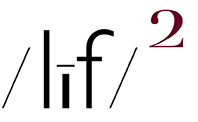all photos ~ (embiggenable)
Given that true intellectual and emotional compatibility
are at the very least difficult if not impossible to come by
we could always opt for the more temporal gratification
of sheer physical attraction …. That wouldn't make you a shallow person would it? Lyle Lovett ~ Here I AM song lyrics
I HAVE LONG BEEN A FAN OF LYLE LOVETT’S MUSIC so, when I read this on TOP ….
“The stories behind what the pictures show are as important or even more important than the things you can see…..I'm not saying that there's anything wrong with pleasant little pictorial experiences, or wandering around to see what "catches your eye," or enjoying patterns, tones, or pretty colors ….”
…. I modified it to suit my purposes in this entry:
Given that true meaning and significance
are at the very least difficult if not impossible to come by in a photograph
we could always opt for the more temporal gratification
of sheer visual attraction …. That wouldn't make you a shallow person would it?
In the spirit of first things first, let me get my pique out of the way––re: the author’s, iMo, dismissive pejorative, I'm not saying that there's anything wrong with pleasant little pictorial experiences, or wandering around to see what "catches your eye," or enjoying patterns, tones, or pretty colors, emphatically pissed me the hell off. I mean WTF, let me count the ways …..
…. let’s start with; “enjoying patterns, tones, or pretty colors” Really? denigrating 3 of the 7 elements of art? Then, let’s move on to “pleasant little pictorial experiences” I really do not know how to address this other than to ask, what the hell is wrong with a “little” (or “large” for that matter) pictorial experience? –– every photograph is a pictorial experience cuz, for fuck’s sake, photography is a visual medium. And, iMo, if the author is trying to convince the reader––or me in particular––that the “meaning” in a photograph is what elevates a picture from “little” to “large”, I would opine that his intellect has gotten out too far ahead of his eyes.
In the spirit of honest disclosure, the part of the author’s discourse that really annoyed me was the inferred suggestion that wandering around to see what "catches your eye" is a somewhat lazy(?), un-serious(?), mindless(?) manner of picture making. The reason that comment ruffled my feathers / got my dander up is simple––it’s cuz that is exactly how I photograph. And, I would strongly suggest that that––at least so In the Fine Art World of photography––is exactly the M.O. of most picture makers. Which, FYI, does mean that, in the service of expressing their picture making intent, they most likely do “wander around” looking for specific picture making opportunities that, no duh, “catch their eye”.
Moving on to “The stories behind what the pictures show are as important or even more important than the things you can see”, I call BS. Although this idea of content over image is the current mantra of the Academic Lunatic Fringe, as far as I am concerned, IFAW pictures are, first, meant to be seen and experience how/what they cause me to “feel”, and then, second, if at all, to be “read”. And, I might add, I don’t need no art-speaky drivel to tell me what to see, feel or think.
All of that written, I hope that opting for the more temporal gratification of sheer visual attraction doesn’t make me a shallow person.
In closing, an opinion from Susan Sontag:
“Standing alone, photographs …. which cannot themselves explain anything …. promise an understanding they cannot deliver. In the company of words, they take on meaning, but they slough off one meaning and take on another with alarming ease ….”
